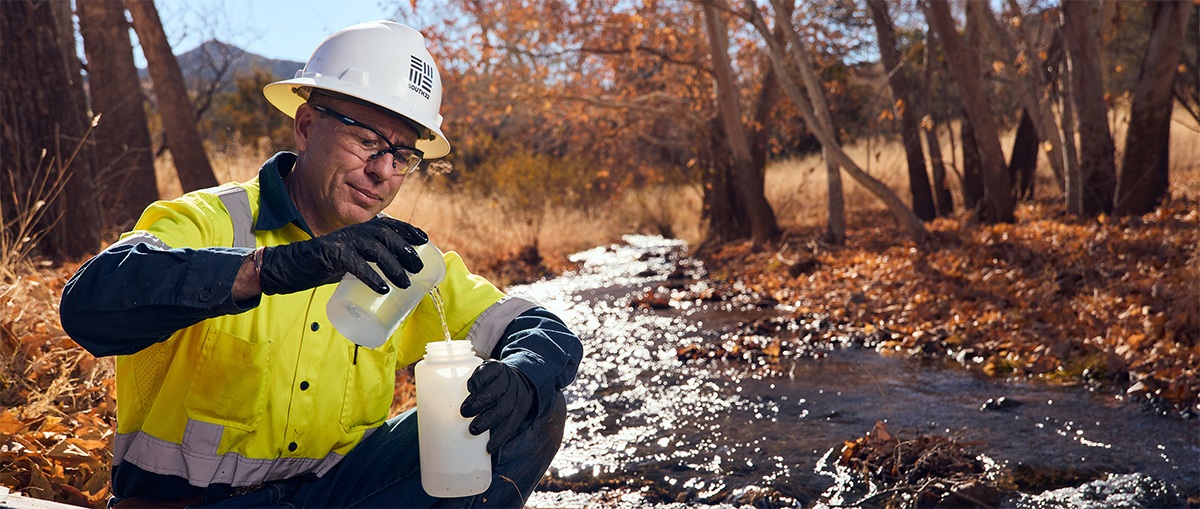
27 AUGUST 2025
How we are managing water, biodiversity and cultural resources at our Hermosa project in Arizona.
We recognise that our activities affect the natural environment through land and water use and other operational activities. As temporary stewards of the lands and waters upon which we operate, we recognise the importance of managing these impacts responsibly.
Water
Our Hermosa project in Southern Arizona is located in an arid region characterised by scarce rainfall and prolonged droughts, which increases reliance on groundwater resources. Dewatering is an essential aspect of underground mining, involving the extraction and relocation of groundwater around the orebody and key infrastructure to maintain safe working conditions. This creates a dual challenge: responsibly managing excess water while addressing the broader risk of water scarcity over the long-term.
With its limited surface footprint, Hermosa’s Taylor deposit is being designed as our first ‘next generation mine’, using automation and technology to help reduce environmental impacts. By prioritising efficient water use and building one of the first lined, dry stack tailings storage facilities in the United States, Taylor’s water demand has the potential to be 90% lower than other mines in the region.
Our approach to water management at Hermosa includes:
- Integrating climate and environmental assessment: Physical climate risk and other environmental assessments have informed the mine’s design and our understanding of potential climate impacts;
- Comprehensive water monitoring: We monitor groundwater and surface water resources throughout the region to establish environmental baselines and inform project design. This includes monitoring over 80 seeps and springs, 80 groundwater wells, and conducting isotope studies on precipitation, spring and well samples to assess groundwater recharge;
- Managing excess groundwater: Most water extracted through dewatering is treated and returned to the environment. Following community engagement, a strong preference was identified for keeping water within the Patagonia Mountains. Our Mine Plan of Operations therefore proposes discharging excess groundwater into infiltration basins, supporting aquifer recharge and helping to sustain ecosystems dependent on groundwater; and
- Integrated tailings management: The feasibility study for the Taylor deposit includes two dry stack tailings storage facilities, designed in alignment with GISTM1 and ANCOLD2 guidelines. The first was established in 2020 as part of our voluntary remediation program, with the second planned for construction in 2029, subject to Federal and State approvals. Benefits of dry stack tailings include a reduced surface footprint compared to conventional methods and reduced water demand due to recycling and reuse capabilities.
Building on robust data collection and scientific evaluations, we developed a Water Monitoring and Mitigation Plan for Forest Service lands, published by the United States Forest Service in May 2025 as part of our Federal permitting process. This plan was open to public consultation and feedback and will be finalised for inclusion in the United States Forest Service’s final Record of Decision expected in July 2026.
We also launched a Community Well Protection Program for private well owners, alongside our ongoing groundwater monitoring program. The initiative includes continuous monitoring of private wells that could be affected by our activities, with commitments to support well owners in maintaining water access should their supply be impacted.
Biodiversity and cultural resources
For more than a decade, we have maintained a robust biological monitoring and cultural resource protection program at Hermosa. This provides a strong baseline understanding of the region’s natural and cultural resources, helping to shape mine design and guide our management approach.
Our biological monitoring includes year-round surveys of flora and fauna, as well as the monitoring of habitats, seeps, springs and riparian areas. To date, we have surveyed more than 12,000 hectares to identify cultural resources and we regularly engage with Native American tribes to understand how these resources can be respected and protected. Insights from these programs inform measures to reduce impacts and advance our aim of achieving no net loss or net gain of biodiversity by closure.
Key controls to avoid and mitigate impacts include:
- Conducting clearance surveys for nesting birds, with avoidance buffers and biological monitoring to protect nests;
- Applying archaeological monitoring when heavy equipment is used near sensitive cultural resources;
- Adjusting project schedules to avoid disturbing species during critical migration or breeding periods;
- Designing overhead powerlines to reduce risks to raptors and other bird species; and
- Implementing “dark sky” measures — including shielding and light colour selection — to minimise impacts on nocturnal species.
Learn more about our approach to managing future air emissions at Hermosa on page 50 of our Annual Report 2025 and how Hermosa is contributing societal value on page 35.
Topics
